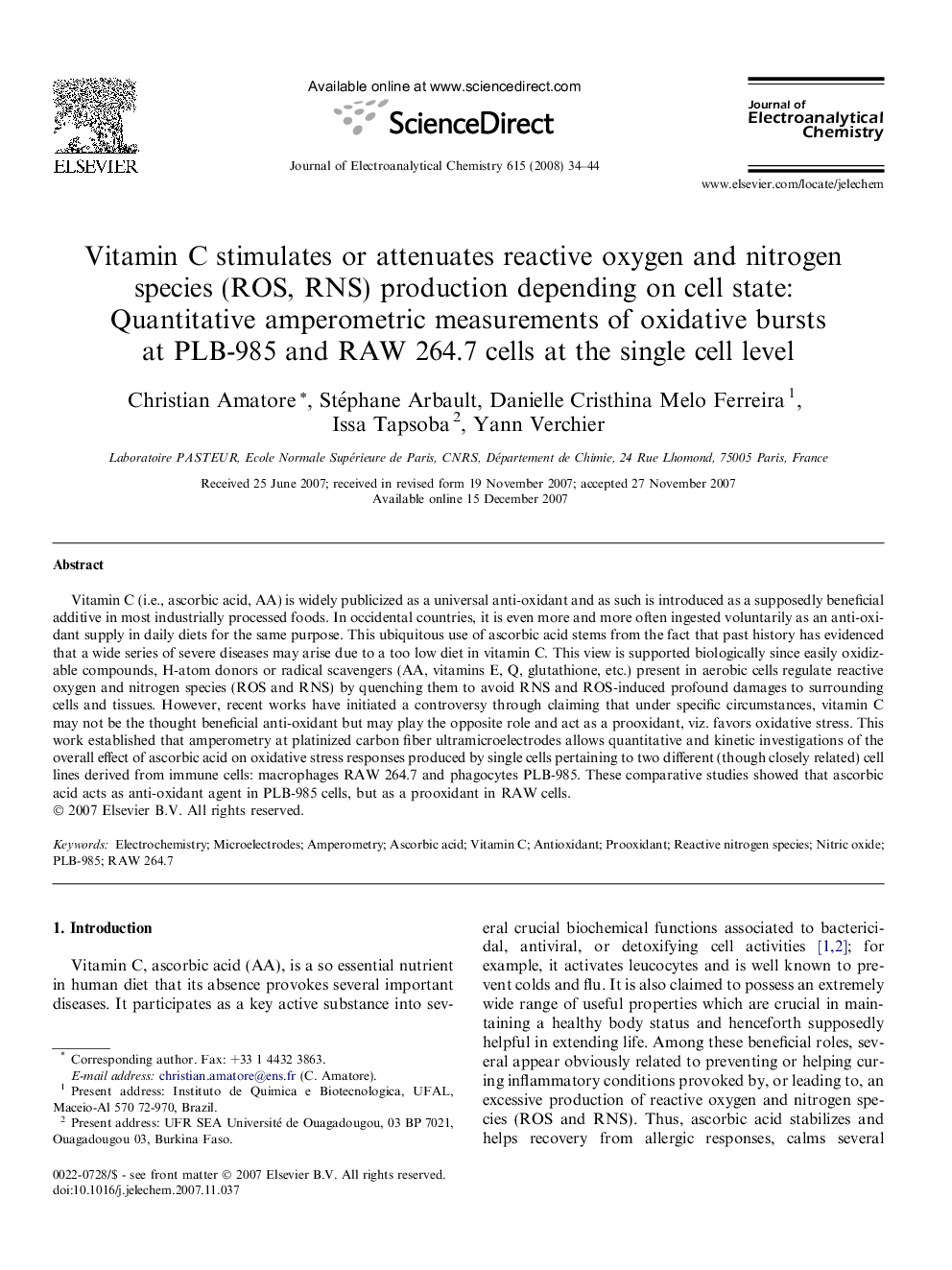| Article ID | Journal | Published Year | Pages | File Type |
|---|---|---|---|---|
| 220621 | Journal of Electroanalytical Chemistry | 2008 | 11 Pages |
Vitamin C (i.e., ascorbic acid, AA) is widely publicized as a universal anti-oxidant and as such is introduced as a supposedly beneficial additive in most industrially processed foods. In occidental countries, it is even more and more often ingested voluntarily as an anti-oxidant supply in daily diets for the same purpose. This ubiquitous use of ascorbic acid stems from the fact that past history has evidenced that a wide series of severe diseases may arise due to a too low diet in vitamin C. This view is supported biologically since easily oxidizable compounds, H-atom donors or radical scavengers (AA, vitamins E, Q, glutathione, etc.) present in aerobic cells regulate reactive oxygen and nitrogen species (ROS and RNS) by quenching them to avoid RNS and ROS-induced profound damages to surrounding cells and tissues. However, recent works have initiated a controversy through claiming that under specific circumstances, vitamin C may not be the thought beneficial anti-oxidant but may play the opposite role and act as a prooxidant, viz. favors oxidative stress. This work established that amperometry at platinized carbon fiber ultramicroelectrodes allows quantitative and kinetic investigations of the overall effect of ascorbic acid on oxidative stress responses produced by single cells pertaining to two different (though closely related) cell lines derived from immune cells: macrophages RAW 264.7 and phagocytes PLB-985. These comparative studies showed that ascorbic acid acts as anti-oxidant agent in PLB-985 cells, but as a prooxidant in RAW cells.
